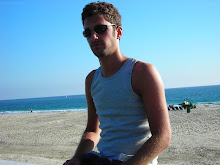Splitting the state are the two iconic river systems of America Mississippi Missouri Nebraska Missouri Kansas City Missouri
From Omaha , Nebraska Kansas City , Missouri Missouri
Power and Light
Confusingly, Kansas City Missouri Kansas Missouri river . The main attractions are on the Missouri Kansas
Known as the New York Midwest , or the ‘Little Apple’ to many, Kansas City Kansas City Rome Paris Kansas
The Hotel Phillips exists as a neat microcosmic illustration of Kansas City Kansas City New York Athens
A good example of this rare case of civic and social pride and precision is borne out in the city’s Power and Light District, a pedestrianised arcade of neon-emblazed, sound-blasted bars, restaurants and clubs close to the core downtown area. This is a district that lives up to its name, with sports bars adjacent to perambulated walkways and highlighted street-level routes, each multiplying to the perception that Kansas City is a pro-social paradise, deliberately designed for human contact and interaction.
Such communication is particularly nuanced at Kansas City Kansas City London
Dean and I were impressed by the musicians’ skill and rapport with the audience, as well as their willingness to try out a number of songs that they were not overly familiar with, at times relying on iPads with piano chords for sight reading new tracks. Naturally we decided to test our hosts’ collective mettle with a succession of tricky requests, including Mumford & Sons’ Little Lion Man and Garth Brooks’ Callin’ Baton Rouge, a song – nay, an entire philosophy – of such pivotal intensity to our previous road trip. After the show, the team members of Howl At The Moon stopped to chat with us about their musical and social history and background, offering the sort of friendly companionship that Dean and I have come to love and enjoy about this inherently polite and respectful country. The British-American banter from our table in the audience to their positions on the stage was a particularly enjoyable part of the evening.
Drunk from the double assault on the senses that were the natural repercussions of good music and good times, that heady mixture of alcohol and music, whiskey and melody, and empowered by both the rhythm and the rye in our blood, Dean and I ambled slowly through the by-now quiet streets in search of a final nightcap and an ever closer harmony before settling in for the night. Our tipsy travelling resulted in a troubadour tune or two as we slalomed down the roads towards a renowned dive bar called The Quaff, away from the neon of downtown, on 10th and Broadway. Locals may have been perturbed by two British boys’ at times pitch perfect and at other times atonal rendition of Walking In Memphis, arising as it did out of less of a connection to a different town in Tennessee and more because the chords lend themselves well to closely pitched harmonies. They would have done well to point out to us that we were neither singing in tune nor walking in Memphis but, save for the fleetingly frightening feedback described below, the good people of Kansas City, Missouri, turned a blind eye and a deaf ear to a pair of Londoners taking too seriously the name of their earlier entertainment: howling at the moon, meandering under streetlights, skirting gutters and chasing stars.
“Don’t come in here”
As is physiological necessity when having consumed a considerable quantity of alcohol, the liquids pass through the human body quickly, often without respect for the exigencies of a given situation. So it was that, mid Lonestar love-in, my bladder decided to exert a hitherto unappreciated level of pressure, and required some fairly drastic action. Out loud I mused the possibility of relieving myself on a quiet corner, off the beaten track but near enough to my present location to avoid any embarrassing developments. In reality I had no intention of committing such an act, but I happened to nevertheless lend voice to thought as Dean and I passed by a small courtyard next to the street. Out of nowhere, a voice rose up from the ether, the great beyond, from the wind itself, bellowing and echoing a statement at once commanding and intractable, seemingly associated with and attributed to one of the courtyard dwellings, but equally entrenched to the entire episode: “Don’t come in here,” came the cry from this spirit, this Ariel of the airways, this anti-Sammy siren of seriousness. I heeded the advice, the warning, the order, and, terrified, slunk away in to the night.
At The Quaff, a dive bar frequented by students and locals, and the last open drinking establishment in the city, Dean and I were able to calm ourselves from sprinting the final few metres to the bar from the haunted courtyard of Kansas
Hungover the following morning, Dean and I prepared to walk off the effects of the night before with a trip to the Westport
We fed our appetites with a stop at the Westport Beer Kitchen, before feeding our fashionistas by perusing the stores of the area, taking advantage of the reasonably favourable exchange rate to purchase some new items in the Country Club Plaza district.
We had half an eye on the rapidly passing time, aware as we were of a long drive ahead further in to Missouri Mississippi river and a gateway to the Wild West and Deep South . St. Louis , Missouri Kansas City
“You’re not in Kansas
"Hungover, MO"
This heavy head, this unmade bed,
This city split in two,
Awake my soul as we slowly roll,
Past hilltops cutting through.
To another destination, another latest stop,
With frisky whiskey to clear the mystery,
Of what state we're in or not.
This foggy memory jolts me, as the peddle hits the floor,
With a weary sigh I wave goodbye,
I'm not in Kansas anymore.
Robert 'Sammy' Samuelson
Kansas City, Missouri - 9 February 2012.


No comments:
Post a Comment